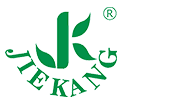Introduction
Rigid “durable” stretchers are unbeatable inside an ER bay—but out in the field their weight, bulk, and storage footprint can slow an EMS crew when seconds count. This guide reviews the modern foldable and portable options that solve those problems, outlines the safety standards you still need to meet, and showcases Jiekang’s certified product line for professional responders.

1.Why Look Beyond Rigid Stretchers?
- Weight & portability: Rigid frames often exceed 22 kg; foldable aluminum models average 7 – 10 kg.
- Storage: Collapsible designs fit side compartments in ambulances and helicopter bays.
- Terrain: Soft-pack or scoop styles navigate stairwells, narrow hallways, and uneven ground where wheeled gurneys cannot.

2.Key Alternative Types
| Type | Typical Weight | Best Use-Case | Pros | Cons |
|---|---|---|---|---|
| Foldable stretcher | 5-10 kg | Confined spaces, disaster kits | Very compact; rapid deployment | Manual carry only |
| Folding stretcher + wheels | 6-15 kg | Ambulance loading | Rolls like a cart; reduces lift injuries | Heavier, costlier |
| Portable scoop stretcher | 7-12 kg | Spinal trauma, solo rescue | Splits & slides under patient | Less buoyancy on water |
| Carry sheet | 11-12 kg | Mass-casualty, remote extractions | drags or carries | Minimal structural support |
| Lightweight gurney | 18-25 kg | Inter-facility transport | Multi-height, trendelenburg | Bulkier when folded |
3.Compliance Still Matters
Even Class I “hand-carried stretchers” must comply with 21 CFR 880.6900 (FDA) and be 510(k)-exempt only if labeled non-sterile and properly registered.
Look for CE/ISO 9001 markings if you operate internationally. Jiekang’s stretcher range is FDA-listed and CE-certified out of the box.

4.How to Choose the Right Model
- Responder profile – two-person squad vs. single medic.
- Terrain & transport – stairs, off-road, airlift, or marine.
- Patient condition – spinal precautions require scoop boards; bariatric calls need higher SWL.
- Storage footprint – verify locker or ambulance side-bin dimensions.
- Regulatory environment – US ( FDA ), EU ( EN 1865/1789 ), or local MOH rules.
5.Authoritative Resources & Further Reading
- “Ultimate Guide to Folding & Medical Stretchers for EMS”
- FDA Product Classification 880.6900 – U.S. Food & Drug Administration

Conclusion
Foldable and portable stretchers give EMS teams the agility rigid frames can’t—without sacrificing safety or compliance. Whether you need a two-fold canvas carrier for disaster kits or a CE-certified scoop stretcher for spinal precautions, Jiekang offers tested, lightweight options that deploy in seconds and store in inches. Ready to upgrade? Contact our specialists for bulk pricing or a sample demo today.
For immediate assistance call +86 199 4191 3491 or email jkyl@jkyl.net.



